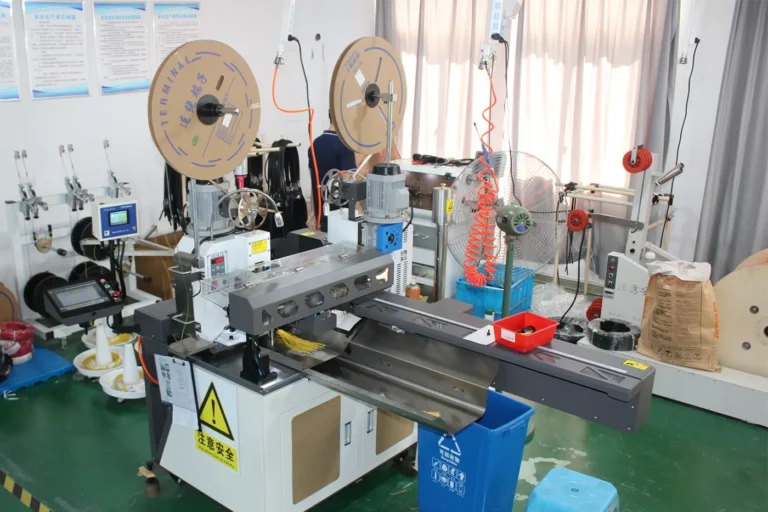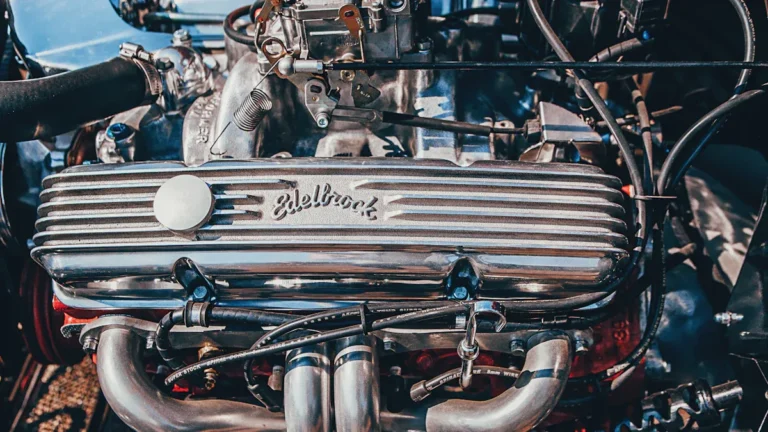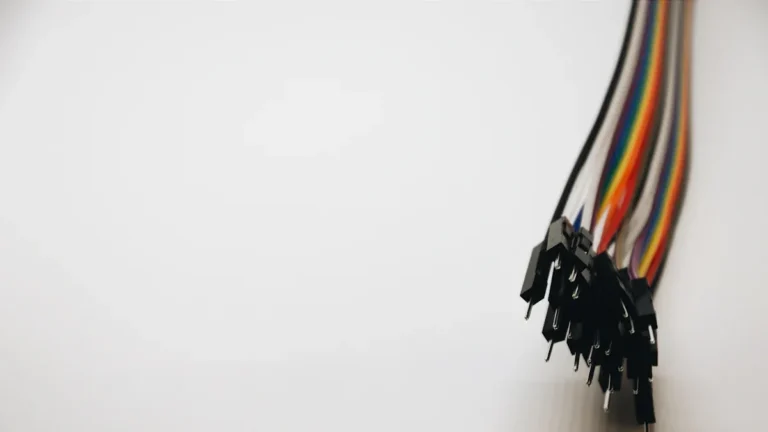How to Install an Air Conditioning Wiring Harness in Your Car

Installing an air conditioning wiring harness in your car might sound tricky, but you can do it with the right approach. Always check your factory wiring diagram before you start. This step helps you find the correct wires and keeps your vehicle safe. You do not need to be an expert. With some patience, clear steps, and basic tools, you can handle this project. Remember, safety comes first every time you work with your car’s electrical system.
Key Takeaways
Always check your car’s wiring diagram before starting to avoid mistakes and keep your vehicle safe.
Gather the right tools like crimpers, wire strippers, and a multimeter to make the job easier and safer.
Disconnect the battery and wear safety gear to protect yourself when working with electrical parts.
Remove the old wiring carefully, take photos to remember connections, and avoid pulling on wires.
Lay out the new harness following the old path, connect all components tightly, secure wires away from heat and moving parts, and test the system thoroughly before finishing.
Tools and Preparation

Gather Tools
Before you start working on your car’s air conditioning wiring harness, you need the right tools. Having the right gear makes the job smoother and helps you avoid mistakes. Here’s a list of tools you should have ready:
1. High-quality ratcheting crimpers with replaceable jaws for strong, safe wire connections. 2. Wire strippers with a self-tensioning grip and adjustable cut depth for clean insulation removal. 3. Wire cutters that can handle thick wires, like 8-gauge and above. 4. Wire-loom tools for adding split-loom protection to your wiring harness. 5. Wire terminal release tools to safely remove connectors without breaking them. 6. Grommets and protective loom materials to keep wires safe when routing them through panels or doorjambs.
You might also want a multimeter to check for power and ground, plus a set of screwdrivers for removing panels.
Review Wiring Diagram
You should always check the wiring diagram for your specific vehicle before you begin. These diagrams show you where each wire goes and help you avoid mistakes. Many car owners find diagrams in their owner’s manual or through online resources. The ALLDATA platform offers interactive, colored wiring diagrams for many vehicles. CarParts.com also has guides that explain symbols and colors, and even lets you search for diagrams by your car’s make and model. If you want the most detailed instructions, Factory-Manuals.com and Helm Inc. both offer factory assembly manuals with step-by-step directions and diagrams. These resources help you match the wiring in your car to the new air conditioning wiring harness.
Safety First
Safety should always come first. Always disconnect your car’s battery before you touch any wires. Wear gloves and safety glasses to protect your hands and eyes. Many experts suggest using VELCRO® Brand fasteners instead of plastic ties. These fasteners hold wires in place without cutting or damaging them, and you can reuse them if you need to move things around. This makes your work safer and keeps your wiring neat.
Remove Old Wiring
Locate Old Harness
First, you need to find the old air conditioning wiring harness in your car. Most harnesses run from the engine bay to the dashboard area. You might see it connected to the compressor, sensors, and control switches. Look for a bundle of wires wrapped in black tape or plastic loom. If you have your wiring diagram handy, use it to trace the harness. This will help you spot the right wires and avoid confusion.
Tip: Take a few photos of the harness before you start. These pictures can help you remember where everything goes when you install the new one.
You may need to remove some panels or covers to get a better view. Use your screwdrivers to take off any plastic trim or kick panels. Keep all screws and clips in a small container so you do not lose them. If you see any zip ties or fasteners holding the harness in place, snip them carefully with your wire cutters.
Disconnect and Remove
Now, you can start disconnecting the old harness. Begin at one end, like the compressor or the fuse box. Unplug each connector by pressing the release tab. If a connector feels stuck, use your terminal release tool. Do not pull on the wires, as this can damage the connectors.
Work your way along the harness, unplugging each connection. You might find some wires attached with crimp connectors or spade terminals. Use your wire strippers or cutters to free these wires. If you see any ground wires bolted to the body, use a socket wrench to remove the bolts.
Once you have disconnected everything, gently pull the old harness out of the car. Move slowly and check for any wires you missed. If you feel resistance, stop and look for hidden fasteners or clips.
Note: Double-check that you removed all connections before tossing the old harness. Missing a wire can cause trouble later.
👏 You did it! The old wiring is out, and you are ready for the next step.
Install Air Conditioning Wiring Harness

Lay Out Harness
Start by laying out your new air conditioning wiring harness along the same path as the old one. This helps you see where each connector goes and keeps things organized. Place the harness loosely in the engine bay and under the dash. Make sure you have enough slack at each end for easy connections.
Here’s a simple way to avoid future headaches:
Run the harness from the fuse box or relay panel to the compressor, condenser fan, and control modules.
Use flexible conduit or split-loom tubing to protect the wires, especially where they pass through metal panels.
Leave a little extra length at each connector. This makes future repairs easier.
Check that the harness does not cross over hot engine parts or moving components.
Tip: Always inspect the cables for any damage before you start. Damaged wires can cause problems later.
Connect Components
Now you can start connecting the harness to each component. Begin with the compressor clutch. Look at your wiring diagram and match the wire colors and plug types. Some cars use a two-wire plug, while others use four wires. Make sure you connect the right wires to avoid damage.
Next, connect the condenser fan. Many setups use a relay that turns on the fan when the compressor clutch gets power. This keeps your system cool and protects it from high pressure. If your car uses a trinary switch, wire it so the fan turns on when the system pressure gets too high. Always use the correct wire gauge and make tight connections.
You will also need to connect sensors and control modules. These might include temperature sensors, humidity sensors, and pressure switches. Each sensor has a special job, like measuring air temperature or checking system pressure. Plug each sensor into the matching connector on the harness.
Here’s a quick look at some common sensors and their roles:
Sensor Type | Where It Goes | What It Does |
|---|---|---|
Temperature Sensor | Near evaporator or radiator | Controls compressor and fan speed |
Humidity Sensor | In air duct | Measures air moisture |
Pressure Sensor | On A/C line | Monitors system pressure |
Control Module | Under dash or near fuse box | Runs the whole A/C system |
Note: Loose or poor connections can cause the system to fail or even start a fire. Always crimp connectors tightly and use heat shrink tubing for extra safety.
Wire Pressure Switches
Pressure switches protect your air conditioning system from damage. You will usually find a binary or trinary switch in the system. The binary switch shuts off the compressor if the pressure gets too low or too high. The trinary switch adds a third function, like turning on the condenser fan at high pressure.
To wire these switches:
Find the correct wires on your air conditioning wiring harness using your diagram.
Connect the switch wires to the harness using crimp connectors.
If your switch controls the fan, wire it to a relay. The relay handles the high current needed for the fan.
Make sure all connections are tight and covered with heat shrink tubing.
Tip: Never let wires hang loose or touch hot engine parts. This can cause shorts or melt the insulation.
Secure Wiring
Once everything is connected, you need to secure the wiring. This step keeps your harness safe from heat, vibration, and sharp edges. Use twist ties, cable clips, or VELCRO® Brand fasteners to hold the harness in place. Avoid plastic zip ties if you plan to make changes later.
Here are some best practices for securing your air conditioning wiring harness:
Use grommets where wires pass through metal panels.
Group wires by function, but keep power and signal wires separate to avoid interference.
Use flame-resistant and waterproof wrapping in the engine bay.
Check that all wires have a gentle bend, not a sharp kink.
Safety Alert: Exposed wires or loose connections can cause shorts, error codes, or even fires. Always double-check your work before reconnecting the battery.
When you finish, your air conditioning wiring harness should look neat and tidy. All wires should be protected, and nothing should dangle or rub against sharp edges. This careful work helps your A/C system run smoothly and makes future repairs much easier.
Test and Troubleshoot
Reconnect Battery
You finished installing your air conditioning wiring harness. Now, it’s time to reconnect the battery. Start by attaching the negative terminal to the cable. Make sure the connection is tight. Start your engine and let it run at least 2,000 RPM for about two minutes. This step helps the system power up and lets the compressor engage. If you hear the compressor click on, you’re on the right track.
Tip: Always double-check that all tools are out of the engine bay before you reconnect the battery. Safety first!
Test System
Testing your new setup is important. Begin with a visual inspection. Look at every wire, connector, and terminal. Check for correct colors, clean crimps, and no visible damage. Use a multimeter to test voltage and continuity. If you hear a beep or see low resistance, your circuits are complete.
Here’s a quick checklist for testing:
Check wire colors and connections.
Use a multimeter to measure voltage and resistance.
Test for short circuits between wires.
Inspect for burnt insulation or melted wires.
Try a pull test on connectors to make sure they hold tight.
Run the system and watch for indicator lights or error codes.
You can use tools like insulated screwdrivers, wire strippers, and a non-contact voltage tester. These help you stay safe and find problems fast.
Tool | Purpose | Safety Tips |
|---|---|---|
Multimeter | Measures voltage, current, and resistance | Inspect leads for damage before use |
Insulated Screwdrivers | Secures connections and accesses parts | Check insulation integrity |
Non-Contact Voltage Tester | Detects voltage presence safely | Verify tester before use |
Troubleshoot Issues
Sometimes, things don’t work perfectly the first time. Here are common problems you might see:
Loose connections from vibration can cause lost power.
Corroded wires block electrical flow.
Frayed or damaged wires risk short circuits and fire.
Overheating melts insulation and causes shorts.
Incorrect wiring leads to poor performance or safety risks.
If you spot any of these, grab your multimeter and check for voltage and continuity. Look for ground faults by measuring resistance between the ground wire and the chassis. Compare your wiring against the factory diagram. If you find melted wires or burnt insulation, replace them right away.
Note: If you feel stuck or see something you don’t understand, ask a professional for help. It’s better to be safe than sorry.
A successful installation means you have stable power, good grounding, tight crimps, and no leaks. Your air conditioning wiring harness should run smoothly, keeping you cool and safe.
You just learned how to install an air conditioning wiring harness step by step. Make sure every connection is tight and test your system before you finish. Watch for signs of trouble, like blown fuses, burning smells, or flickering lights. These can mean wiring harness wear or damage:
Short circuits or blown fuses
Unusual burning smells
If you ever feel unsure, check your wiring diagram or ask a pro. You’ll feel proud when your A/C runs smoothly after a successful DIY job!
FAQ
Can I install an air conditioning wiring harness without special tools?
You can use basic tools like screwdrivers and wire cutters. If you want strong connections, crimpers and a multimeter help a lot. These tools make your job easier and safer.
What if I connect a wire to the wrong spot?
If you mix up wires, your A/C might not work. You could blow a fuse or damage a part. Always check your wiring diagram before you connect anything. Double-check each step.
How do I know if my harness is secure?
Look for wires that stay in place and do not touch hot or moving parts. Use VELCRO® fasteners or cable clips. Give each wire a gentle tug. If nothing moves, you did it right.
Do I need to test the system after installing the harness?
Yes, you should always test your work. Use a multimeter to check voltage. Start your car and turn on the A/C. Watch for warning lights or strange sounds. Testing helps you catch problems early.






